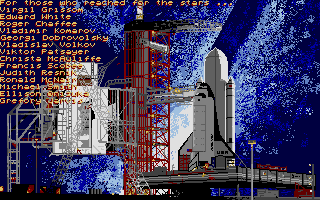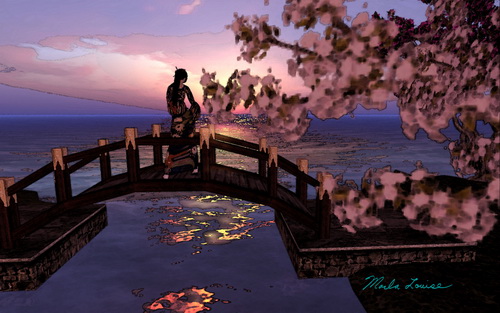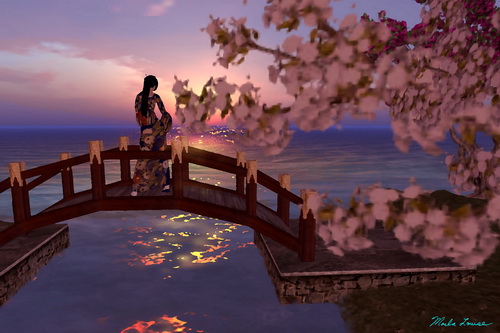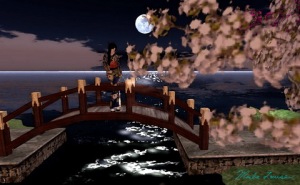
Tea House #3 coming out of printer
Giclée (pronounced zhee-CLAY) printing is basically a fancy form of ink jet prints. But what a fantastic form, with Giclée one can create fantastic archival original prints or fantastic reproductions that pretty much blow away any printing methodology before. Given a high quality pigment ink and high quality canvas or paper, the result will be a museum quality piece.
Prices and quality vary a great deal. For a 24×36″ canvas framed on 3/4″ stretcher bars, you may be talking anywhere from $60 to over $250. Depending on where you are in the art pecking order, that is either cheap or a huge cut of your margins when you sell a piece.
So far, I have had experience with three different printers, and would like to pass on my experience. All of these printers support internet and mail order.
Winkflash (http://www.winkflash.com)
24x36x.75 framed with shipping – About $62 including shipping when a sale comes around, otherwise about $98.
This is a huge company that seems geared to turning the crank. There is no information on the quality of inks or canvas, but I have found them to be poor. In addition, I have had problems with any large prints including warped frames, poor stretching, flaking paint, and creases in the canvas. Seems to take about 3 weeks. Poor customer service (never responded to my problem emails, canceled a 6 piece order 3 weeks after it had been made because one image was of a nude). Although they are the cheapest when on sale, I do not recommend them.
Canvasprinters (http://canvasprinters.com)
24x36x.75 framed with shipping – About $110 including archival inks.
Seems to be a small operation. I managed to hit them for a print the very week they were moving, so there were some delays although I got my print in two weeks. The quality of the print seemed good, but the shipping seemed a little shoddy (the print was wrapped in an old pillow case). Personal customer support. I did send in another order today to see how they would do after their move. I tentatively recommend them.
GRI Studios (http://www.gristudios.com)
24x36x.75 framed with shipping – About $140 with archival inks and UV spray.
For me, they are a great printer, since they are only a 20 minute drive from my home. They sell themselves as craftsmen, and even sign their work. This might even translate into an ability to sell your art for a little more money. I had problems with my first printing from them (too dark) and they worked with me to resolve the issues creating a new print for me (no charge). I fully recommend them.
Marla












